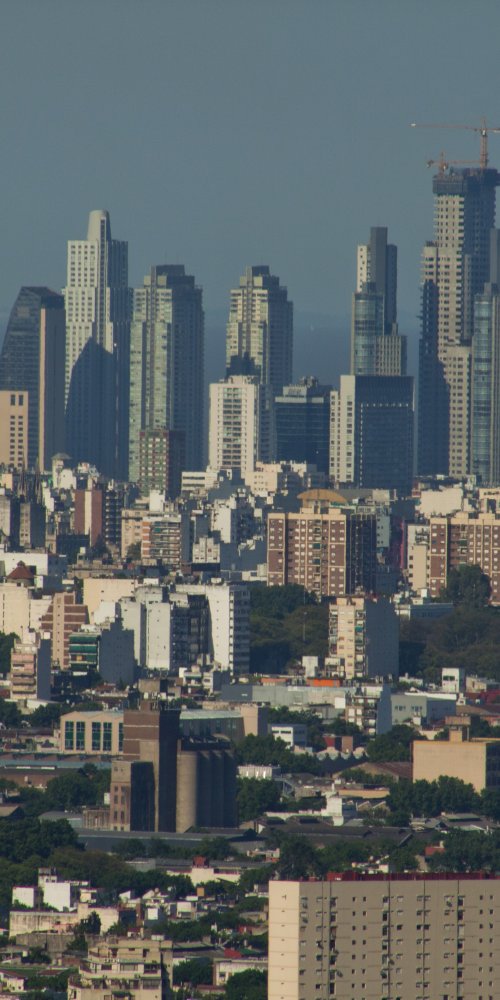

Close your eyes and imagine stepping into the lively pulse of Buenos Aires. You hear the rhythmic beep of ticket barriers welcoming riders underground, the distinct clang of tram bells echoing down cobblestone streets, and conversations slicing through the air in Spanish, English, Italian, and French. Every corner bustles with a mix of tango melodies and the chatter of locals and tourists alike, all weaving through a seamless public transport system that stitches this sprawling metropolis together. As you board a shiny green-and-yellow metro car or hop on a sleek bus, the scent of freshly brewed coffee mingles with the city air, inviting you onward to your next adventure in this enchanting Argentine capital.

Exploring Buenos Aires via public transport is not only economical but also one of the fastest ways to get around this sprawling, vibrant city. Compared to taxis or private rides, a single metro or bus ticket costs mere pennies - ideal when you want to stretch your travel budget without compromising convenience (Tourism Board, March 2025). Beyond the wallet, hopping aboard the metro or buses reduces your environmental footprint considerably; Buenos Aires' public transit network embraces green initiatives and offers quieter, electric-powered trams and ferries. When I first climbed the cathedral tower and then zipped down through downtown on the subway, I admired how effortlessly the system connects historic barrios with modern hotspots.
| Mode | Lines | Peak Frequency | Night Service |
|---|---|---|---|
| Metro (Subte) | 6 lines (A-F) | Every 3–5 mins | No (Limited overnight buses instead) |
| Tram (Premetro) | 1 line | Every 10 mins | No |
| Bus (Colectivos) | 100+ routes | Every 5–20 mins | Several night routes |
| Ferry | 2 main lines across Río de la Plata | Every 30–60 mins | No |
| Bike-share (Ecobici) | N/A (500+ bikes) | Always available | N/A |
This layered network offers something for every traveller. Whether you’re dashing through the bustling metro or enjoying a leisurely ferry ride across the river, public transport in Buenos Aires, AR delivers a rich transit experience combining speed, convenience, and authentic city vibes.
Buenos Aires public transport swells during weekday rush hours from 7–10 AM and 5–8 PM. Trains and buses often pack tightly, especially lines heading to the financial district or universities.
Travelling off-peak rewards you with a more relaxed commute, easier seating, and often quicker access through barriers. It's also when the city’s quieter side emerges; take in street art and café windows as you glide from station to station.
Notably, weekend and late-evening travellers will find most bus lines running but Subte services wrap up by 11:30 PM. Night buses fill the gap, but expect fewer frequent service and slower journeys.
To avoid unwanted jostling or delays, consider steering clear of peak hours if your schedule allows. This also reduces your carbon footprint as transit operates most efficiently with balanced demand.

Subte stations have elevators and ramps on most lines, but some older stops may present challenges. Buses and trams are largely low-floor and wheelchair-accessible. Always check ahead for elevator maintenance updates.
Folding prams are welcomed on all modes. During peak times, boarding might be tricky, so plan for off-peak travel where possible to ensure a comfortable ride for you and your child.
Airport commuters benefit from dedicated bus routes and a modern metro link to Ezeiza; all modes accommodate typical luggage sizes but avoid rush hours to guarantee space and ease.
Generally, no. The SUBE card is widely used and accepted on nearly all buses. However, some minor routes may still require cash, so having small notes is helpful.
Purchase and top up your SUBE card before entry, check line maps at stations, and plan trips via official apps. Trains run frequently but cease operations by 11:30 PM.
The Premetro tram supplements the metro by serving southern neighbourhoods and is a scenic, calm alternative for some trips.
Not yet. Contactless payments require the SUBE card or linked mobile apps; traditional credit cards cannot directly pay fares at this time.
Buenos Aires bursts with colourful barrios, historic sites, and vibrant street life - and its public transport system is your key to unlocking all corners of this captivating city. Start with a SUBE card, plan your routes, and embrace the rhythm of the metro, trams and buses. Got questions or your own travel tips? Share them below or join our newsletter for insider updates and exclusive guides!

Additional articles from our network with useful insights about Buenos Aires.